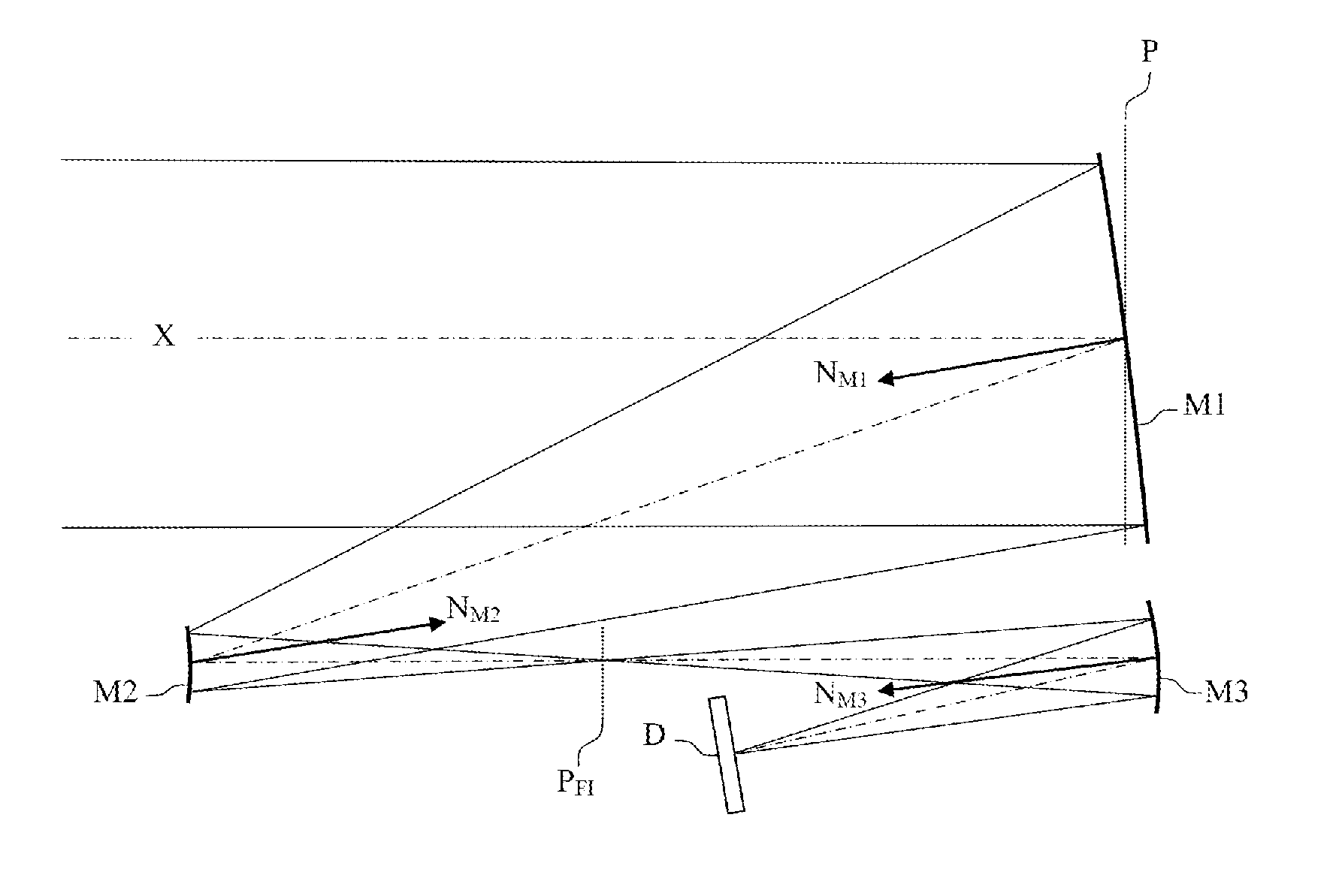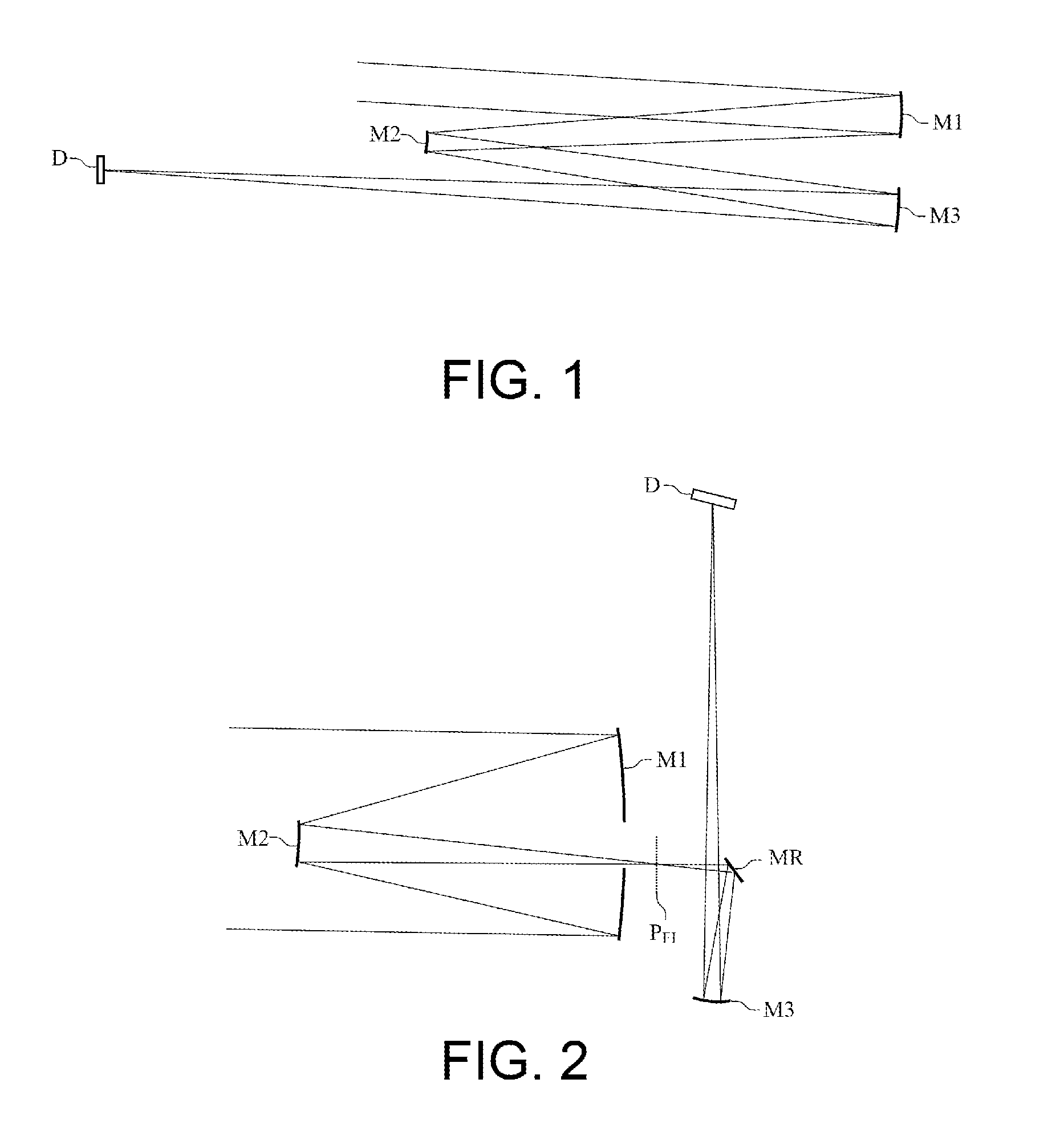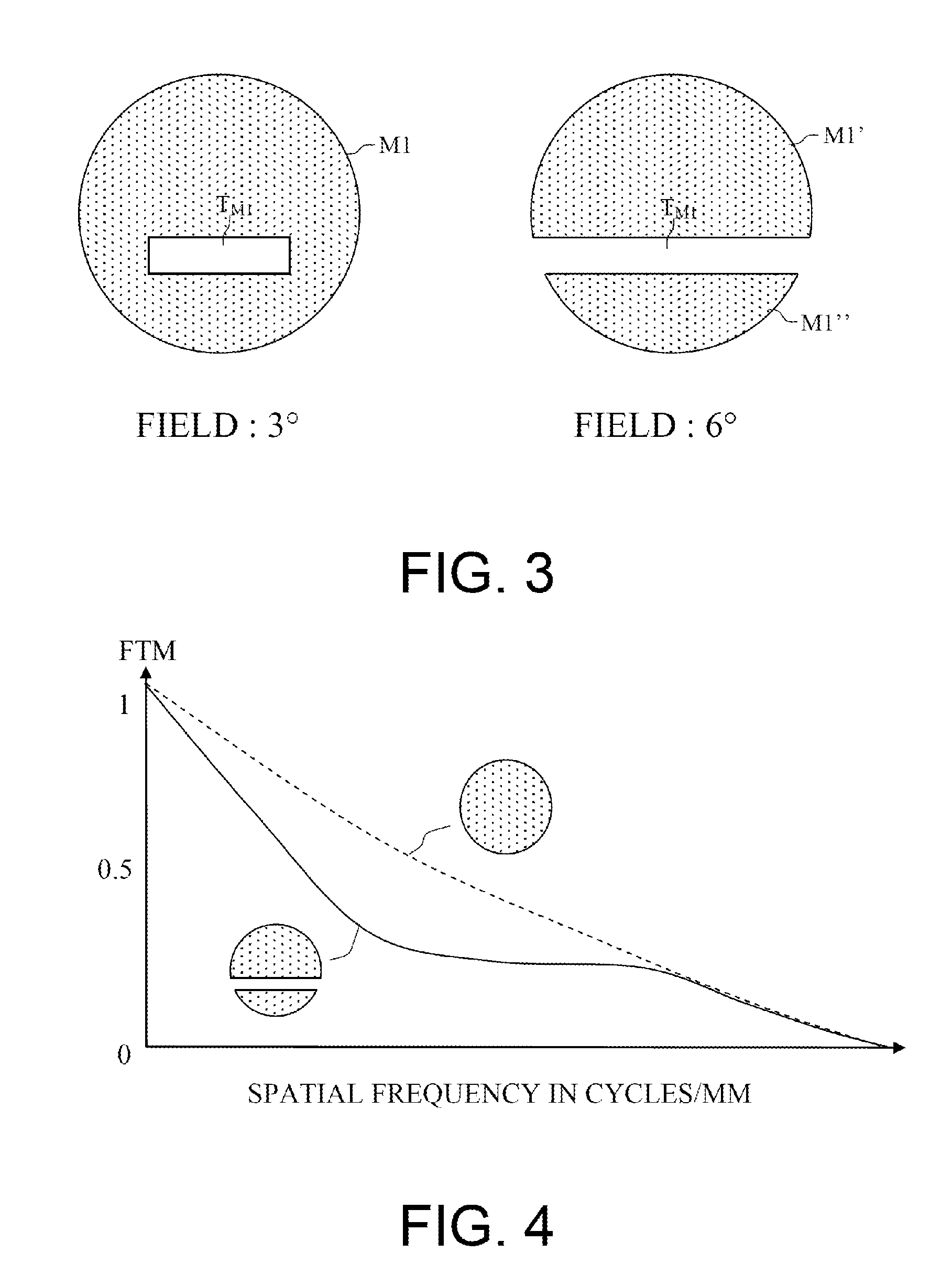Korsch-type compact three-mirror anastigmat telescope
a compact, three-mirror technology, applied in the field of telescopes, can solve the problems of increasing geometrical astigmatism and eccentricity coma aberrations which are not generally acceptable, and reducing the field of korsch-type telescopes. , to achieve the effect of improving the field of korsch-type telescopes, improving quality, and improving the correction of optical aberrations
- Summary
- Abstract
- Description
- Claims
- Application Information
AI Technical Summary
Benefits of technology
Problems solved by technology
Method used
Image
Examples
Embodiment Construction
[0050]By way of example, FIG. 7 represents an optical architecture of three-mirror anastigmat telescopes according to the invention. This architecture comprises a concave first mirror M1, a convex second mirror M2 and a concave third mirror M3. In this figure, the optical axis X passing through the centre of the pupil P is represented by dotted lines and the normals NM1, NM2 and NM3 to the surface of the mirrors M1, M2 and M3 are represented by arrows arranged at the centre of the mirrors.
[0051]This architecture is derived from the Korsch-type architectures as described previously. However, it is demonstrated that the use of freeform surface mirrors makes it possible to notably increase the accessible anastigmat field. According to the architectures employed, the gain is substantially by a factor 2.
[0052]The three mirrors are arranged so that the first mirror and the second mirror form, from an object at infinity, an intermediate image situated in a focussing plane PFI situated betw...
PUM
 Login to View More
Login to View More Abstract
Description
Claims
Application Information
 Login to View More
Login to View More - R&D
- Intellectual Property
- Life Sciences
- Materials
- Tech Scout
- Unparalleled Data Quality
- Higher Quality Content
- 60% Fewer Hallucinations
Browse by: Latest US Patents, China's latest patents, Technical Efficacy Thesaurus, Application Domain, Technology Topic, Popular Technical Reports.
© 2025 PatSnap. All rights reserved.Legal|Privacy policy|Modern Slavery Act Transparency Statement|Sitemap|About US| Contact US: help@patsnap.com



